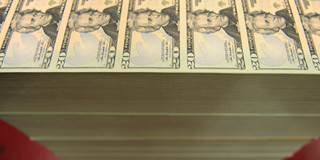The debate about so-called helicopter money is burdened by deep fears and unnecessary confusions: some worry that monetary finance is bound to produce hyperinflation; others argue that, in terms of increasing demand and inflation, it would be no more effective than current policies. Both cannot be right.
LONDON – Eight years after the 2008 crisis governments and central banks – despite a plethora of policies and approaches – have failed to stimulate enough demand to produce sustained and strong growth. In Japan, so-called Abenomics promised 2% inflation by 2015; instead, the Bank of Japan (BOJ) expects it to be close to zero in 2016, with GDP growth below 1%. Eurozone growth halved in the second quarter of 2016 and is dangerously dependent on external export demand. Even the US recovery seems tepid.
Discussions of “helicopter money” – the direct injection of cash into the hands of consumers, or the permanent monetization of government debt – have, as a result, become more widespread. In principle, the case for such monetary finance is clear.
If the government cuts taxes, increases public expenditure, or distributes money directly to households, and if the central bank creates permanent new money to finance this stimulus, citizens’ nominal wealth will increase; and, unlike with debt-financed deficits, they will not face increased future taxes to pay off the debt incurred on their behalf. Some increase in aggregate nominal demand will inevitably occur, with the degree of stimulus broadly proportional to the amount of new money created.

LONDON – Eight years after the 2008 crisis governments and central banks – despite a plethora of policies and approaches – have failed to stimulate enough demand to produce sustained and strong growth. In Japan, so-called Abenomics promised 2% inflation by 2015; instead, the Bank of Japan (BOJ) expects it to be close to zero in 2016, with GDP growth below 1%. Eurozone growth halved in the second quarter of 2016 and is dangerously dependent on external export demand. Even the US recovery seems tepid.
Discussions of “helicopter money” – the direct injection of cash into the hands of consumers, or the permanent monetization of government debt – have, as a result, become more widespread. In principle, the case for such monetary finance is clear.
If the government cuts taxes, increases public expenditure, or distributes money directly to households, and if the central bank creates permanent new money to finance this stimulus, citizens’ nominal wealth will increase; and, unlike with debt-financed deficits, they will not face increased future taxes to pay off the debt incurred on their behalf. Some increase in aggregate nominal demand will inevitably occur, with the degree of stimulus broadly proportional to the amount of new money created.